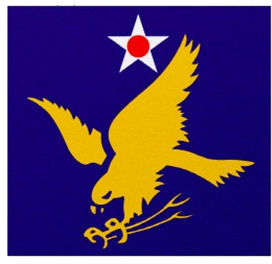The 509th Composite Group is well known as the Army Air Force unit responsible for dropping the atomic bombs on Hiroshima and Nagasaki. Less famous, but equally important in the development of the bomb, was the (Special) 216th Army Air Forces Base Unit. At Wendover Airfield in Utah, Colonel Clifford Heflin, the head of the 216th, shared command with Colonel Paul Tibbets, the head of the 509th.
Organization
As the Manhattan Project progressed at Los Alamos, work began on bomb design and delivery. This process began as early as 1943, when Captain Deak Parsons was made the head of the Ordnance Division at Los Alamos. Additionally, in coordination with the Air Force, prototypes for the “Silverplate” B-29 Superfortress bombers that would eventually deliver the bombs began in earnest. In 1944, General Leslie Groves held a series of meetings with AAF General Henry Arnold, eventually agreeing, “The AAF would organize and train the requisite tactical bomb unit, which, for reasons of security, must be as self-sustaining as possible and exercise full control over delivery of bombs on the targets selected. Manhattan would receive from the AAF whatever assistance it needed in ballistic testing of bombs and air transportation of materials and equipment” (Jones 520). The two also outlined plans for a “tactical bomb unit,” which would be the 509th Composite Group, and the creation of Project Alberta, led by Deak Parsons, to work on bomb delivery.
By August 1944, Los Alamos outlined the need for test drops, particularly of the “Fat Man” plutonium design. The decision was made for a special ordnance unit, the 216th AAF, to be formed and assigned, along with the 509th, to Wendover. Under the command of Heflin (who historian Joseph Papalia described as “the second Tibbets”), the 216th was divided into two subsections. The Flight Test Section (FTS), commanded by Major Clyde “Stan” Shields, was to handle drop tests, ordnance tests, and Silverplate B-29 tests. The Special Ordnance Detachment, commanded by Captain Henry Roerkohl, was to work on the design of drop test models as well as the necessary adjustments to Silverplate equipment.
Testing

Between October 1944 and August 1945, 155 test units were dropped at Wendover. Some bomb dummies were filled with cement, while others were filled with Composition B (a mixture of RDX and TNT) and painted orange, giving them the nickname “pumpkins.” Instead of a weaponeer on board during drop tests, an electronics expert was there to monitor the test unit. Darrell Dvorak, Heflin’s son-in-law, described this process as a “recurring cycle” of technological development, bomb design, drop testing, and adjustments of the planes. Norman Ramsey, a veteran of Project Alberta, recalled, “In these tests, [dummy bomb] units approaching more and more closely to the final model were tested for ballistics information, for electrical fusing information, for flight tests of electrical detonators, for test of the aircraft release mechanism, for vibration information, for assembly experience, for temperature tests, etc.”
The 216th AAF also played a role during the Trinity Test in July, as a big concern for Los Alamos scientists was their ability to take accurate measurements of the bomb’s destructive abilities. In the end, members of the 216th flew two observation planes during the test. Those on board included physicist Luis Alvarez, Parsons, Heflin, and Shields.
By late July, the 509th Composite Group had begun the process of transporting bomb materials to Tinian Island. The 216th stayed at Wendover to continue test drops and the construction of bomb components. When the war finished, the 216th was moved to Sandia Base in New Mexico, along with all bomb tooling materials and even some buildings from Wendover. Sandia was the site of further drop testing and bomb engineering for the years to come.
Legacy
The work of the 216th AAF is not well known in part because it was not published in the 1945 Smyth Report on the Manhattan Project. Nevertheless, the work of the 216th proved invaluable to the success of the project. The importance of drop testing and engineering cooperation would continue to be relevant as nuclear development became an important part of the Cold War.





